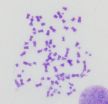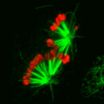(Press-News.org) Cancer cells are resourceful survivors with plenty of tricks for staying alive. Researchers have uncovered one of these stratagems, showing how cells lacking the tumor suppressor BRCA1 can resume one form of DNA repair, sparing themselves from stagnation or death. The study appears in the January 21st issue of The Journal of Cell Biology.
The BRCA1 protein helps to mend double-strand DNA breaks by promoting homologous recombination. Without it, cells can amass broken, jumbled, and fused chromosomes, which may cause them to stop growing or die. Although cells lacking BRCA1 seem like they should be vulnerable, loss of the protein instead seems to boost abnormal growth.
Recent studies have shown that cells lacking BRCA1 compensate by cutting back on 53BP1. This protein helps orchestrate a different DNA repair mechanism, nonhomologous end joining (NHEJ), and it thwarts a key step in homologous recombination. Researchers think that, in cells without BRCA1, 53BP1 spurs excessive NHEJ that can cause fatal chromosomal chaos. But with 53BP1 out of the way, the cells are able to resume homologous recombination. That might explain why cells that lack BRCA1 and eliminate 53BP1 can withstand traditional chemotherapy compounds and PARP inhibitors, a new generation of anti-cancer drugs that are in clinical trials. But how do cancer cells turn down 53BP1?
Researchers previously found that certain mutant fibroblasts increase production of cathepsin L, a protease that destroys 53BP1. BRCA1-deficient cancer cells take advantage of the same mechanism, according to a team of researchers led by Susana Gonzalo from the Washington University School of Medicine. When they cultured breast cancer cells that were missing BRCA1, the cells stopped growing. After two weeks of lethargy, however, some cells, which the researchers dubbed BOGA cells (BRCA1-deficient cells that overcome growth arrest), began to divide again. These cells showed increased levels of cathepsin L and reduced amounts of 53BP1. Eliminating cathepsin L from BOGA cells or dosing them with vitamin D, a cathepsin L inhibitor, prevented the decline in 53BP1 abundance.
To find out whether boosting cathepsin L levels enabled the cancer cells to restart homologous recombination, the researchers monitored sites of DNA damage tagged by RAD51, a protein that helps promote homologous recombination. The cells that had stopped growing did not display RAD51 foci, but these foci were prevalent in BOGA cells with reduced 53BP1. Removing cathepsin L from BOGA cells increased 53BP1 levels and diminished the number of RAD51 foci.
If cells can't perform homologous recombination, they turn to repair mechanisms such as NHEJ that can lead to jumbled chromosomes. However, after DNA-breaking doses of radiation, BOGA cells exhibited few chromosome defects. The number of these flaws climbed after the researchers stabilized 53BP1 levels by inhibiting cathepsin L or trimming its abundance.
The team then analyzed tumor samples from breast cancer patients. Researchers suspect that cathepsin L attacks 53BP1 by entering the nucleus. Samples from patients with BRCA1 mutations or with triple-negative breast cancer—an aggressive form of the disease—showed high levels of nuclear cathepsin L and reduced quantities of 53BP1. That suggests tumors in these patients hike the amounts of cathepsin L in the nucleus to break down 53BP1 and restore homologous recombination.
"It's a new pathway that explains how breast cancer cells lose 53BP1," says Gonzalo. How cancer cells boost nuclear cathepsin L levels is unclear, she notes.
Triple-negative breast cancers are currently identified by their lack of Her2 and the estrogen and progesterone receptors. The work suggests that another trio of measurements—the amounts of 53BP1, cathepsin L, and vitamin D receptor in the nucleus—might help identify patients that are resistant to current breast cancer treatments. These people might respond to cathepsin inhibitors, some of which are undergoing animal testing. These compounds might steer the cells away from homologous recombination and leave them vulnerable to other therapies.
INFORMATION:
Grotsky, D.A., et al. 2013. J. Cell Biol. doi:10.1083/jcb.201204053.
About The Journal of Cell Biology (JCB)
JCB is published by The Rockefeller University Press. All editorial decisions on manuscripts submitted are made by active scientists in conjunction with our in-house scientific editors. JCB content is posted to PubMed Central, where it is available to the public for free six months after publication. Authors retain copyright of their published works, and third parties may reuse the content for non-commercial purposes under a creative commons license. For more information, please visit www.jcb.org.
Enzyme helps cancer cells avoid genetic instability
2013-01-21
ELSE PRESS RELEASES FROM THIS DATE:
Molecular forces are key to proper cell division
2013-01-21
AMHERST, Mass. – Studies led by cell biologist Thomas Maresca at the University of Massachusetts Amherst are revealing new details about a molecular surveillance system that helps detect and correct errors in cell division that can lead to cell death or human diseases. Findings are reported in the current issue of the Journal of Cell Biology.
The purpose of cell division is to evenly distribute the genome between two daughter cells. To achieve this, every chromosome must properly interact with a football-shaped structure called the spindle. However, interaction errors ...
Genes and their regulatory 'tags' conspire to promote rheumatoid arthritis
2013-01-21
In one of the first genome-wide studies to hunt for both genes and their regulatory "tags" in patients suffering from a common disease, researchers have found a clear role for the tags in mediating genetic risk for rheumatoid arthritis (RA), an immune disorder that afflicts an estimated 1.5 million American adults. By teasing apart the tagging events that result from RA from those that help cause it, the scientists say they were able to spot tagged DNA sequences that may be important for the development of RA. And they suspect their experimental method can be applied to ...
Mature T cells can switch function to better tackle infection
2013-01-21
The fate of mature T lymphocytes might be a lot more flexible than previously thought. New research from the RIKEN Center for Allergy and Immunology (RCAI) in Japan and La Jolla Institute for Allergy and Immunology (LIAI) in the USA shows for the first time that mature CD4+ helper T lymphocytes can be re-programed to become killer-like CD8+ T lymphocytes and gain killing functions.
The findings are reported today in the journal Nature Immunology, by a team of researchers led by Ichiro Taniuchi from RIKEN and Hilde Cheroutre from La Jolla. The team show using transgenic ...
Warmer soils release additional CO2 into atmosphere; Effect stabilizes over longer term
2013-01-21
DURHAM, N.H. -- Warmer temperatures due to climate change could cause soils to release additional carbon into the atmosphere, thereby enhancing climate change – but that effect diminishes over the long term, finds a new study in the journal Nature Climate Change. The study, from University of New Hampshire professor Serita Frey and co-authors from the University of California-Davis and the Marine Biological Laboratory, sheds new light on how soil microorganisms respond to temperature and could improve predictions of how climate warming will affect the carbon dioxide flux ...
Researchers turn one form of neuron into another in the brain
2013-01-21
A new finding by Harvard stem cell biologists turns one of the basics of neurobiology on its head – demonstrating that it is possible to turn one type of already differentiated neuron into another within the brain.
The discovery by Paola Arlotta and Caroline Rouaux "tells you that maybe the brain is not as immutable as we always thought, because at least during an early window of time one can reprogram the identity of one neuronal class into another," said Arlotta, an Associate Professor in Harvard's Department of Stem Cell and Regenerative Biology (SCRB).
The principle ...
'Quadruple helix' DNA discovered in human cells
2013-01-21
In 1953, Cambridge researchers Watson and Crick published a paper describing the interweaving 'double helix' DNA structure - the chemical code for all life.
Now, in the year of that scientific landmark's 60th Anniversary, Cambridge researchers have published a paper proving that four-stranded 'quadruple helix' DNA structures - known as G-quadruplexes - also exist within the human genome. They form in regions of DNA that are rich in the building block guanine, usually abbreviated to 'G'.
The findings mark the culmination of over 10 years investigation by scientists ...
Tumors evolve rapidly in a childhood cancer, leaving fewer obvious tumor targets
2013-01-21
An extensive genomic study of the childhood cancer neuroblastoma reinforces the challenges in treating the most aggressive forms of this disease. Contrary to expectations, the scientists found relatively few recurrent gene mutations—mutations that would suggest new targets for neuroblastoma treatment. Instead, say the researchers, they have now refocused on how neuroblastoma tumors evolve in response to medicine and other factors.
"This research underscores the fact that tumor cells often change rapidly over time, so more effective treatments for this aggressive cancer ...
Developing microbial cell factories by employing synthetic small regulatory RNAs
2013-01-21
Biotechnologists have been working hard to address the climate change and limited fossil resource issues through the development of sustainable processes for the production of chemicals, fuels and materials from renewable non-food biomass. One promising sustainable technology is the use of microbial cell factories for the efficient production of desired chemicals and materials. When microorganisms are isolated from nature, the performance in producing our desired product is rather poor. Metabolic engineering is performed to improve the metabolic and cellular characteristics ...
Genetic basis of high-risk childhood cancer points to possible new drug treatment strategy
2013-01-21
(MEMPHIS, Tenn. – January 20, 2013) Research led by St. Jude Children's Research Hospital scientists has identified a possible lead in treatment of two childhood leukemia subtypes known for their dramatic loss of chromosomes and poor treatment outcomes.
The findings also provide the first evidence of the genetic basis for this high-risk leukemia, which is known as hypodiploid acute lymphoblastic leukemia (ALL). Normal human cells have 46 chromosomes, half from each parent, but hypodiploid ALL is characterized by fewer than 44 chromosomes. Chromosomes are highly condensed ...
La Jolla Institute identifies molecular switch enabling immune cells to better fight disease
2013-01-21
SAN DIEGO – (January 20th, 2013) A research team led by the La Jolla Institute for Allergy & Immunology has discovered the mechanism that enables CD4 helper T cells to assume the more aggressive role of killer T cells in mounting an immune attack against viruses, cancerous tumors and other damaged or infected cells. The finding, made in collaboration with researchers from the RIKEN Institute in Japan, could enable the development of more potent drugs for AIDS, cancer and many other diseases based on using this mechanism to trigger larger armies of killer T cells against ...



